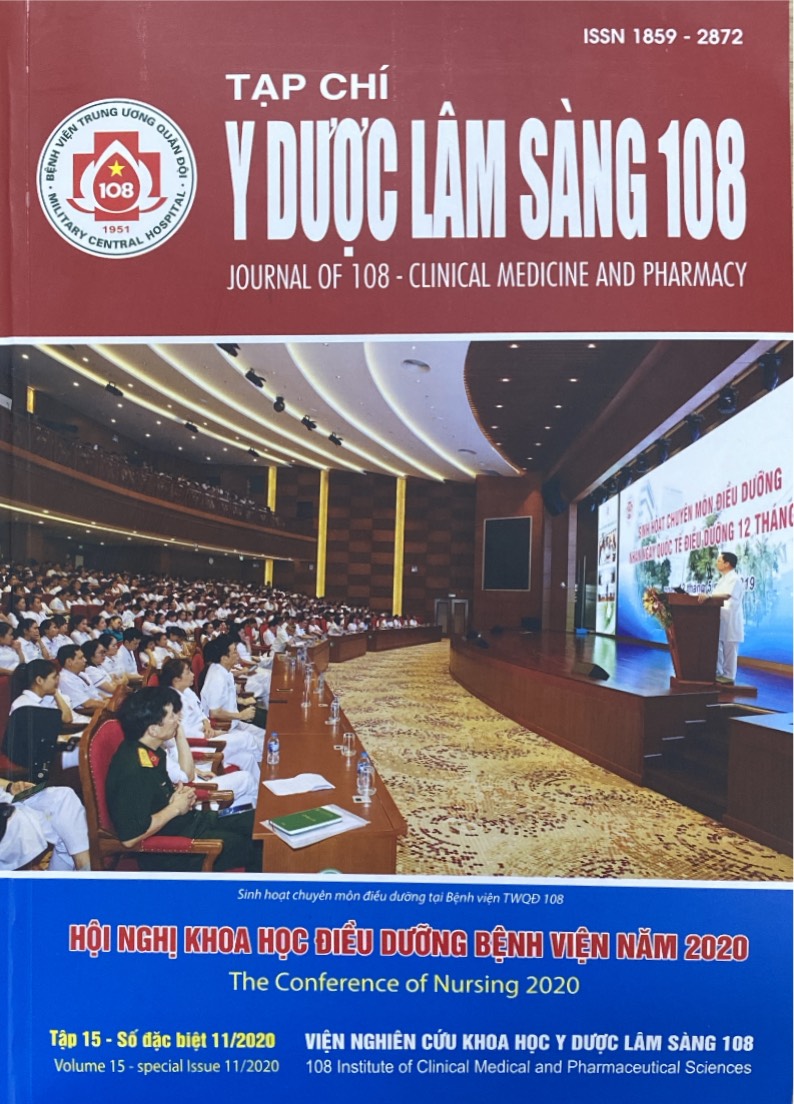Monitoring and care of pediatric patients after cardiovascular intervention at Center for Cardiovascular Children, Vietnam National Hospital of Pediatrics in 2018: Current situation and some affecting factors
Main Article Content
Keywords
Abstract
Objective: To assess the implementation of the procedures of monitoring and post-intervention care and to analyze some factors affecting the compliance with these procedures. Subject and method: A cross-sectional design combined both (parallel) quantitative and qualitative. The tools to collect are the samples of medical records (HSBA) and in-depth interviews with leaders, health insurance staff, doctors, nurses and family members of pediatric patients. Result: In the first 2 hours of post-intervention, the procedure with the lowest rate of compliance by doctors was "signing the consent form when explaining to family members" (53.2%), for nurses as "measuring blood pressure", "taking the temperature with thermometer" and "catching the pulse at the instep" 30 minutes/time and "assessing the status of the limbs heads in compression bandage interface pressures" (25.3%, 21.5%, 17.7%, and 21.5%). When pediatric patients were in cardiopulmonary resuscitation department, the procedure with the lowest compliance rate was "assessing the degree of pinched circuit at the limbs" (32.5%, for doctors) and "calculating the amount of fluid input and output according to the medical command” (35.4%, for nurses). Factors affecting compliance include: does not have specific monitoring and care procedures for cardiovascular intervention, lack of nursing human resources, overloaded patients and inexperience in young doctors, intervention facilities are still cramped. Conclusion: The rate of correct, proper and complete performance in our study is significantly lower than the other studies that have been reported. The hospital should have a specialized care and monitoring procedures for cardiovascular intervention and need to upgrade facilities, equipment to meet the standards of the cardiovascular intervention department/Room.
Article Details
References
2. Bộ Y tế (2014) Hướng dẫn quy trình kỹ thuật nội khoa chuyên ngành tim mạch. Ban hành kèm theo quyết định số 3983/QĐ-BYT ngày 03 tháng 10 năm 2014.
3. Bộ Y tế (2018) Thông tư số 15/2018/TT-BYT ngày 30/5/2018 Quy định thống nhất giá dịch vụ khám bệnh, chữa bệnh bảo hiểm y tế giữa các bệnh viện cùng hạng trên toàn quốc và hướng dẫn áp dụng giá, thanh toán chi phí khám bệnh trong một số trường hợp.
4. Vũ Thị Tú Uyên (2017) Nghiên cứu sự hài lòng của người chăm sóc trẻ và một số yếu tố ảnh hưởng tại Khoa Khám bệnh, Bệnh viện Nhi Trung ương năm 2017. Luận văn Thạc sỹ quản lý bệnh viện, Đại học Y tế công cộng.
5. Juran NB et al (1999) Nursing interventions to decrease bleeding at the femoral access site after percutaneous coronary intervention. SANDBAG Nursing Coordinators. Standards of Angioplasty Nursing Techniques to Diminish Bleeding Around the Groin. Am J Crit Care 8(5): 303-313.
6. Nasser TK et al (1995) Peripheral vascular complications following coronary interventional procedures. Clin Cardiol 18(11): 609-614.
7. JACC (2012) Downloaded from content. onlinejacc.org by on May 25, 2012 Cardiac Catheterization Laboratory Standards 59: 54-59.
8. Salamonson Y, Rolley JX, Dennison CR et al (2010) Nursing care practices following a percutaneous coronary intervention: results of a survey of Australian and New Zealand cardiovascular nurses. J Cardiovasc Nurs 25(1): 75-84.
9. Schoonhoven L, Schiks I, Verheugt F et al (2007) Performance evaluation of arterial femoral sheath removal by registered nurses after PCI. Eur J Cardiovasc Nurs 19(3): 181-189.
 ISSN: 1859 - 2872
ISSN: 1859 - 2872
